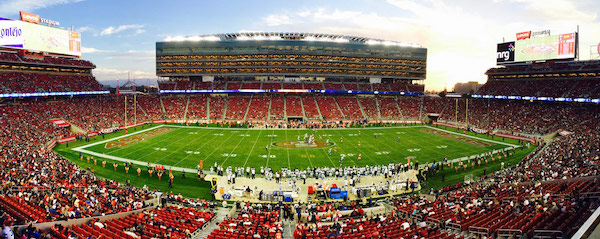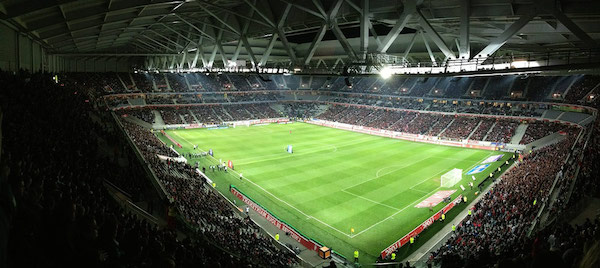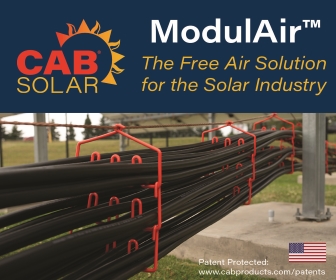Solar Lights Up Sports
You've probably seen outdoor solar lighting around your neighborhood, lining front walks like miniature runways, providing a decorative touch to nighttime landscapes. But what about on a larger scale? Surely those low-powered displays couldn't light an entire stadium?
Actually, they can. Solar lights have come a long way from their residential predecessors. Thanks to the latest technology, the solar energy conversion efficiency has advanced to where they can produce the energy needed for regular use in the more famous sports fields or stadiums. As with any clean energy technology, however, powerful solar lighting comes with a few pros and cons.

Save Money
For starters, and perhaps the most obvious, solar lights save on the energy bill. Solar-powered LED sports lights gather the sun's energy and store it in batteries. You turn them on and off with the touch of a light tap on your smartphone screen. They can also be set to automatically switch on when it gets dark. This unique feature allows them to be completely independent of the power grid, while still allowing for the sale of solar energy surpluses. This can be especially helpful if, as a stadium owner, you need to support other investments. Exporting energy might well be the next trend for major stadiums - the current pandemic has shown that businesses need more backup solutions.
Go wireless
Forget clumsy installations and long-hours of scheduled maintenance to fix the wiring system. At last, you can benefit from a ready lighting solution. The solar flood light all-in-one design requires no wires going around the pitch, which is safer for bystanders and players as well. They are really easy to install.
While periodic maintenance might still be a factor, the standard solar light is versatile. Basically, you can mount these sports lights anywhere you want. As long as the luminaries' weight is not a problem.
Better safety
Thanks to the 12V low voltage, solar fixtures reduce the chance of getting an electric shock. The compact design allows no load loss because the solar system planning also improved over the years.
Generally speaking, LED sports lights are lighter than traditional light sources. So, you get the best from both worlds. You will not have to compromise any safety precautions due to the solar panels. In fact, you can count on several accessories. As well as custom installations for indoor playing areas.
Limitations
- Dependent on environment
Batteries need daylight to recharge fully. Then again, they cannot charge quickly on cloudy days.
The performance of the photovoltaic panel is calculated under the STC conditions (Standard Test Condition). In detail, this means an integrated solar irradiance of 1,000W/m2, at the temperature of 77 °F (25 °C), and with a spectral distribution of 1.5.
All manufacturers test their products in order to define the power of their solar light panels. But they still need up to 10 hours to recharge. So, if it keeps raining on the sports field for days on end, drained solar sports lights might not be able to light up.
- Can't charge at night
If you plan to host most of your sports events during the night, you might want to reconsider the idea of using solar lights only. In this case, it is better to opt for a hybrid lighting system, which includes traditional, wired sports lights. Or, you should request a grid-connected installation.
In the latter case, during the first hours, your lights would consume the solar-generated electricity. Then, when the battery charge is not sufficient, the electricity grid will guarantee the power supply.
- Need regular cleaning
The main focus of periodic maintenance is to clean the solar panels. In detail, the dust accumulated on the cells will affect the solar energy conversion efficiency.
Luckily, the cleaning procedure is simple and involves no dangerous chemicals. Most manufacturers will remind you to only use warm water and, perhaps, a specific cloth to clean them.
Usually, maintenance cleaning takes minutes. So, whether you use solar sports lights for a football stadium or a volleyball court, you should not have any issue with scheduling regular cleaning.
- Heavy metals in solar panel
On a more serious note, a solar panel contains heavy metals such as:
- Cadmium
- Lead
- Zinc
Improper disposal will be harmful to the environment. If they are badly managed at the time of replacement, these panels could create pollution and health problems. So, you must consider a recycling plan.
Today, the cost of recycling is higher than sending them to a landfill. A temporary solution is to store them until better times. But we must be diligent and store these harmful materials very carefully.

Feasible applications of solar lighting in the sports field
1. Mobile light tower
Before considering some of the uses of mobile light towers, it is better to remind ourselves of their main function. That is, provide brightness in any place where standard installations might be a problem.
A movable light tower provides excellent emergency lighting. For example, at the soccer field sidelines for first responders. Dirty tackles can easily lead to injuries. So, a well-lit area for first-aid is useful.
Similarly, golf players who like to train after work can enjoy a mobile light tower in their driving range. The owner could benefit from providing a service and not spending money on just that client's late training obsession.
2. Solar panel on high mast light pole
High mast floodlighting is ideal for installing solar sports lights. By placing the solar panels so high, you reduce the risk of any accidental obstruction for the solar cells.
These lights are highly reliable. So, you can install them in parking lots near the sports field and between the stands. Thanks to remote lighting control, they are easy to monitor without having to climb the high mast. Plus, you can set different light intensity levels. This means that the players and spectators will never suffer from the lights being too bright.
3. Stadium roof attachment
One of the best ways of taking advantage of their autonomous, off-grid system is to mount them where other floodlights cannot stand.
You can install the solar panel at the top of your stadium roof to receive sunlight. Then, a custom installation will connect the solar module to the roof-mounted sports light.
Imagine the most creative domed stadium lighting layout. With independent solar sports lights, you can achieve your dream design. Light up the athletes from above. Create a cozy atmosphere for your special guests. Even the umpires and other officials will appreciate that!

Most likely, solar lights in the sports field will change the way we experience our beloved matches. Without a doubt, this new trend will rise in the following years to come. Mainly because the post-covid economy will have to deal with renewable energies and better living conditions.
The latest generation models will transform the ordinary stadium into a more eco-compatible arena. At the same time, the solar panels will provide a new source of income and lighter energy bills.
Philip Ferguson is the Social Media Manager at Sport Light Supply, a lighting and design company that develops LED solutions for sports venues worldwide.
Sport Light Supply | sportlightsupply.com
Author: Philip Ferguson
Volume: 2021 March/April












